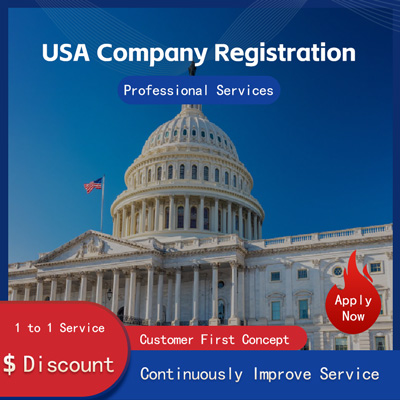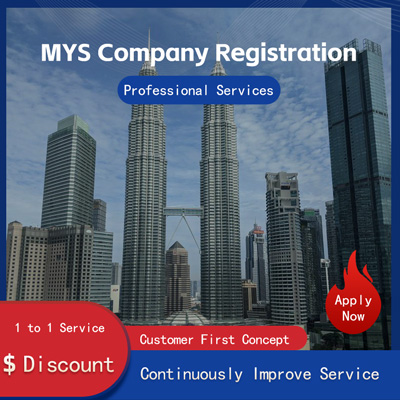
How Can Domestic Companies Smoothly Register a US Trademark and Take the First Step Toward Global Expansion?
Exploring U.S. Trademark Registration How Domestic Enterprises Can Successfully Expand Overseas
In recent years, as global trade dynamics continue to evolve and Chinese enterprises accelerate their internationalization, more and more domestic companies are setting their sights on overseas markets. Among them, the United States-being one of the world's largest consumer markets-has become a top destination for many brands looking to expand globally.

However, during the process of entering the U.S. market, trademark registration is often overlooked or underestimated by some companies, leading to subsequent issues such as infringement disputes and weak brand protection. Recently, media reported that a well-known Chinese smartphone brand failed to complete trademark registration before entering the U.S. market, only to have its trademark preemptively registered by a competitor. As a result, the company had to pay a significant sum to reclaim the rights. This incident once again reminds domestic enterprises that trademarks are not just carriers of brand image but also critical legal tools for protection abroad.
As a country with a mature trademark system, the United States has a distinct set of rules and procedures compared to China. For companies aiming to go global, it is essential to fully understand these processes and make thorough preparations.
Basic Features of the U.S. Trademark System
The United States follows the First-to-Use principle, meaning trademark rights are granted to the party that first used the mark in commerce, rather than the one who filed the application earliest. This differs significantly from China’s First-to-File system.
Even after completing trademark registration in the U.S., companies cannot completely rule out challenges from third parties who may claim prior use. U.S. trademark registration is managed by the United States Patent and Trademark Office USPTO.
When submitting an application, businesses can choose between two bases Actual Use or Intent-to-Use.
Actual Use means the trademark is already being used commercially, and applicants must provide the date of first use along with specimens showing the mark in use.
Intent-to-Use applies to marks not yet used in the U.S. but intended for future use. In this case, the applicant must submit a Statement of Use within six months after receiving a Notice of Allowance.
Challenges and Misconceptions Faced by Domestic Companies
Despite growing awareness among Chinese enterprises about going global, many still harbor misconceptions regarding U.S. trademark registration.
For example, some believe that having a registered trademark in China automatically grants protection in the U.S.-which is far from true. Others attempt to cut costs by filing applications themselves or using agencies unfamiliar with U.S. legal procedures, often resulting in rejections or ineffective protection post-registration.
Another common issue stems from language and cultural differences, which can lead to trademark conflicts. Certain Chinese brand names, when translated into English, may bear close resemblance to existing registered marks, causing confusion.
In early 2025, a Chinese apparel brand faced a lawsuit for alleged trademark infringement due to a name similarity with a major U.S. brand. The dispute ended with the company forced to change its brand identity and suffering significant losses.
Key Steps for Successful U.S. Trademark Registration
To avoid similar pitfalls, domestic enterprises should focus on the following aspects when applying for a U.S. trademark
1. Conduct a Comprehensive Trademark Search
Before submitting an application, perform a detailed search to ensure the selected mark is not already registered or in use. Tools like USPTO’s TSDR system can be used, or professional legal assistance sought to assess potential risks.
2. Select Appropriate Registration Classes
The U.S. operates under the Nice Classification system, which categorizes goods and services. Accurately choosing the right class based on your product or service type is crucial; incorrect classification may limit trademark protection.
3. Prepare Evidence of Use Carefully
If applying on an Actual Use basis, clear samples of usage-such as product packaging or website screenshots-must be submitted. These materials should accurately reflect how the trademark is being used in commerce.
4. Consider Engaging a Local U.S. Attorney
Although companies can file applications independently, the complexity of U.S. law makes it advisable to work with a local attorney familiar with USPTO procedures. They can help avoid legal pitfalls and provide strong support in case of opposition or litigation.
5. Monitor Renewal and Maintenance Requirements
A U.S. trademark registration lasts for 10 years. During the fifth to sixth year, a Declaration of Use must be filed. Failure to comply with renewal procedures may result in cancellation of the trademark.
Case Studies Strategic Trademark Planning Pays Off
Take the example of a Chinese smart hardware brand that began preparing for trademark registration six months before entering the U.S. market. It conducted comprehensive searches and enlisted the help of a local intellectual property law firm. The company also registered its trademark across multiple relevant classes, ensuring robust brand protection. Ultimately, the trademark was approved smoothly, helping establish strong brand recognition shortly after launch.
Moreover, large cross-border e-commerce platforms are actively expanding their trademark portfolios overseas. According to reports from Yicai, in the second half of 2025, several top sellers successfully registered hundreds of trademarks in the U.S., covering categories such as fashion, home goods, and electronics. This strategic move not only enhanced product compliance but also provided a solid defense against potential IP disputes.
Conclusion
In today’s fiercely competitive global environment, trademarks have become a vital component of corporate competitiveness. For Chinese enterprises seeking to enter international markets, proactive planning and systematic execution of U.S. trademark registration are indispensable steps toward global success.
Only by truly understanding and respecting the legal frameworks of target markets can companies secure a lasting advantage in the global arena.
Still have questions after reading? More than 98,000 users have contacted us. Please fill in the following information to obtain business information.

Previous Article
Quick Efficient Guide to Registering a Trading Company in Singapore Practical Tips and Experience Sharing
Jul 10, 2025Service Scope
MoreRecommended for You
- Can HK Associations Start a New Chapter on the Mainland? In-Depth Analysis and Discussion
- HK Company Name Change Guide Easily Master the Process
- Do You Know About MPF in Hong Kong? A Guide to Mastering the Process and Tips!
- Why Is the Hong Kong Company Registration Number Also Called the Business Registration Number? Unveiling the Core Secrets of Company Registration!
- HK Business Registration Certificate Processing Time Explained
- In Hong Kong Choosing Between Round and Square Seals for Contract Execution
- Can a Mainland Company Be Converted to a Hong Kong Company? Full Process Analysis from Registration to Audit
- How to Choose the Right Hong Kong Valuation Agency? A Comprehensive Analysis of Qualifications and Requirements
- HK Business Registration Fee Analysis Why These Details Can't Be Overlooked?
- What Are the Key Advantages of Establishing a Branch in Hong Kong? Seize Opportunities and Expand Your Global Horizon
- Why Hong Kong Is the Top Choice for Dollar Payments?
- HK Company Registration Domestic or Overseas? The Truth You Need to Know!
- How to Understand Revenue Definition and Calculation in Sole Proprietorship in Hong Kong?
- Advantages Process Analysis of Registering a Hong Kong Company in Jinan
- HK Inactive Report Fee Breakdown Essential Info Key Points to Note
- How to Retrieve Info on Dissolved HK Companies? A Guide with Tips Tricks
- Cost of Registering a Hong Kong Company in Wuhan A Comprehensive Analysis!
- HK Director Appointment Process Key Highlights How Much Do You Know?
- HKMS Comprehensive Service Analysis Efficient Ways to View Features Application Tips
- Is Hong Kong Business Registration Certificate Really Required to Change Every Year? Uncovering the Truth and Misconceptions


 ONE
ONE








Customer Reviews
Small *** Table
December 12, 2024The experience was very good. I was still struggling to compare it with other companies. I went to the site a few days ago and wanted to implement it as soon as possible. I didn't expect that everything exceeded my expectations. The company is very large, with several hundred square meters. The employees are also dedicated and responsible. There is also a wall of certificates. I placed an order on the spot. It turned out that I did not make a wrong choice. The company's service attitude is very good and professional. The person who contacted me explained various things in detail in advance. After placing the order, the follow-up was also very timely, and they took the initiative to report the progress to me. In short, I am very satisfied and recommend this company!
Lin *** e
December 18, 2024When I first consulted customer service, they recommended an agent to me. They were very professional and patient and provided excellent service. They answered my questions as they came in. This 2-to-1 service model is very thoughtful. I had a lot of questions that I didn’t understand, and it’s not easy to register a company in Hong Kong. Fortunately, I have you.
t *** 7
December 19, 2024I originally thought that they only did mainland business, but I didn’t expect that they had been doing Hong Kong business and were doing very well. After the on-site interview, I decided to ask them to arrange the registration of my Hong Kong company. They helped me complete it very quickly and provided all the necessary information. The efficiency was awesome. It turns out that professional things should be done by professionals.👍
b *** 5
December 16, 2024In order to register a company in Hong Kong, I compared many platforms and stores and finally chose this store. The merchant said that they have been operating offline for more than 10 years and are indeed an old team of corporate services. The efficiency is first-class, and the customer service is also very professional.